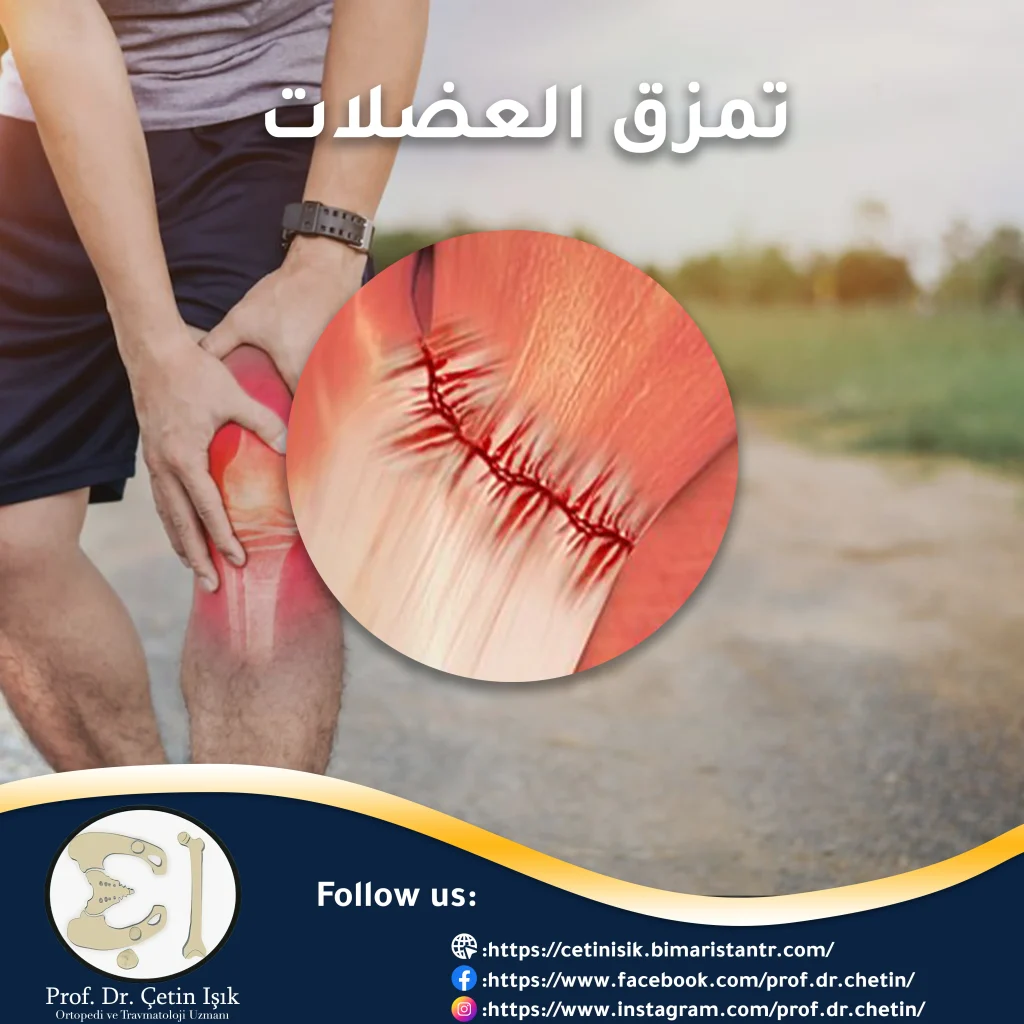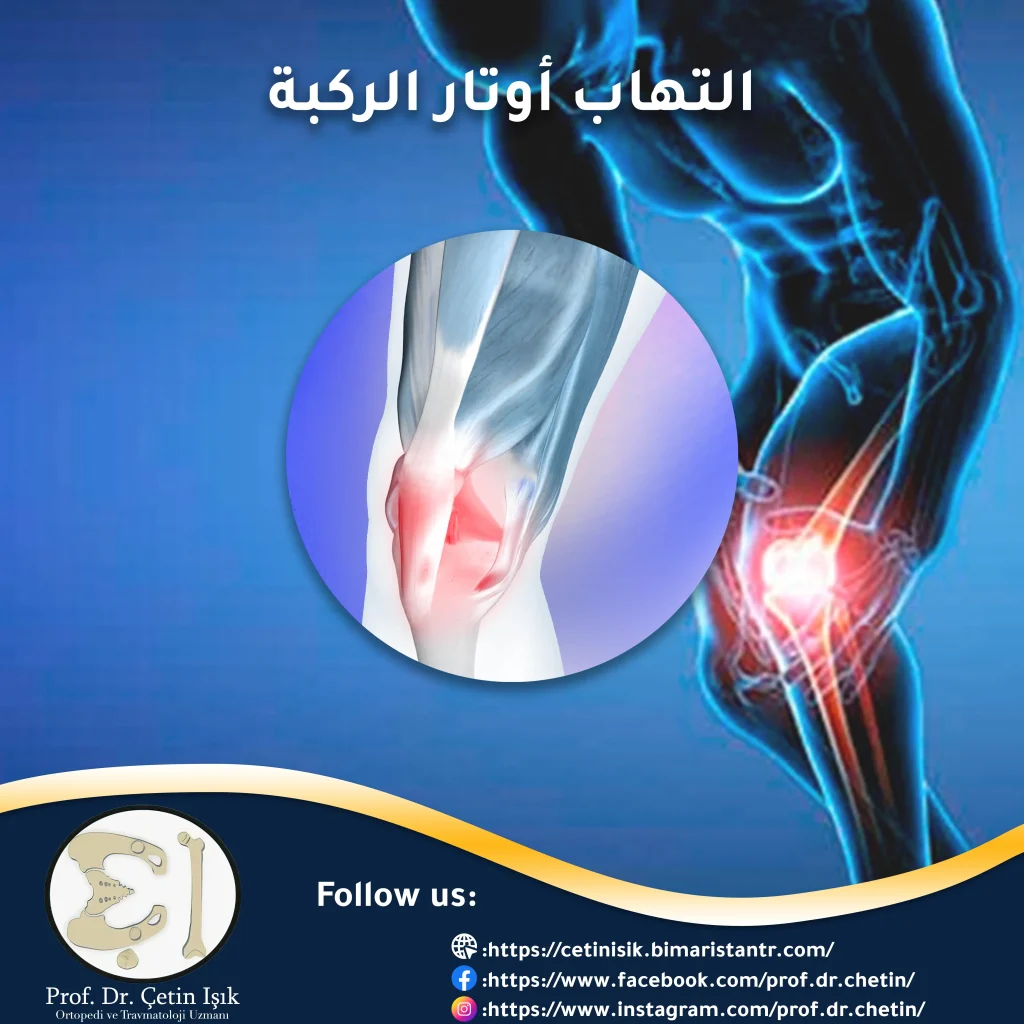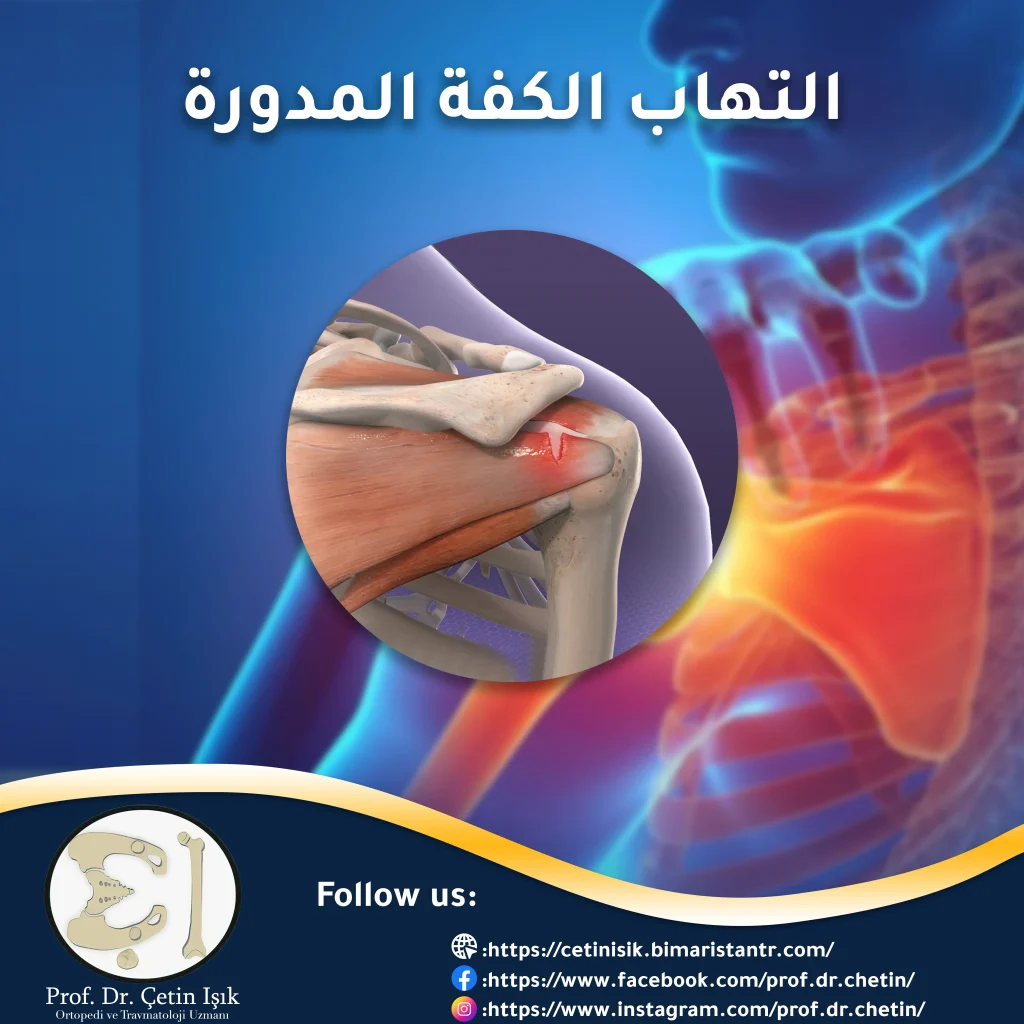Muscle tear is a common condition in which muscle fibers stretch and tear as a result of applying a large force to them, which causes severe pain and the muscle loses its function, which affects the patient’s activity.
A muscle tear is a painful injury that occurs at all ages and in both sexes, but it is more common among athletes who engage in strenuous sports activities. The danger of a muscle tear lies in the possibility of losing the function of the affected muscles, which limits the patient’s movement. Learn with us about muscle tear, its causes, and treatment methods.
A glimpse of muscle tear
Muscle tear is the stretching and tearing of muscle fibers due to the application of great pressure on the muscle beyond the limits of its ability, which leads to feeling pain whose intensity varies depending on the degree of tear, in addition to limiting the muscle's range of motion and deteriorating its function.
A muscle is composed of muscle fibers that give the body the ability to move through contraction and relaxation, in addition to maintaining the body's position and stability. The muscle also contains connective tissue (support) that is located between the muscle fibers and provides support and regulation for these fibers.

Muscle ruptures are common in athletes who engage in strenuous sports activities, and are also common in the elderly due to their weak muscle strength and flexibility.
Muscle ruptures can be classified into three degrees depending on the severity of the injury (types of muscle rupture), which are:
- First degree (mild muscle tear): This involves stretching and slight tearing of the muscle fibers. The resulting pain is mild, and this tear heals within a few weeks.
- Second degree (moderate muscle tear): This includes a partial tear of the muscle fibers, causing more severe pain, swelling, and bruising. The tear here requires several weeks or months to heal with the help of physical therapy.
- Third degree (severe muscle tear): This degree includes a complete tear in the muscle fibers, leading to severe pain, swelling, and loss of muscle function.

Causes of muscle tear
There are many reasons that lead to muscle fibers stretching and then tearing. The causes of muscle tears include the following:
- Strong or sudden movement: Sudden and strong movement can cause muscle tearing, examples of which include a sudden change in direction of movement and a sudden jump.
- Muscle fatigue and fatigue: Overuse of muscles leads to fatigue, making them more susceptible to tearing
- Exercising incorrectly: Exercising incorrectly can put additional pressure on the muscles, increasing the possibility of them tearing
- Not warming up before exercising: Warming up increases blood flow to the muscles and improves their flexibility, and not warming up increases the risk of muscle tearing after exercise.
- Trauma: A fall or direct injury can cause muscle tears
- Diseases: Some muscle diseases can increase; Such as myositis andMuscular dystrophy; Risk of muscle rupture
Symptoms of muscle tear
A muscle tear can cause many symptoms of varying severity depending on the degree of tear. Common symptoms of a muscle tear include:
- Pain: This is the primary symptom of a muscle tear, and it ranges from mild to severe depending on the degree of tear. The pain may worsen with movement.
- Swelling and bruising: Swelling can occur due to inflammation and increased blood flow to the affected area, in addition to bruising resulting from ruptured blood vessels.
- Weakness of torn muscles: Weakness and loss of strength may occur in the affected muscles, leading to difficulty performing activities to which these muscles contribute.
- Limits range of motion: Limiting the range of motion of joints can occur if the surrounding muscles are injured
- Feeling a crack when the rupture occurs: The patient can hear or feel a crack when the rupture occurs
Diagnosis of muscle tear
A muscle tear is usually diagnosed through the clinical history, which includes knowing the symptoms that the patient complains about and the activities that he usually performs, in addition to a clinical examination that includes examining the affected area and knowing the circumstances of the injury.
In some cases, imaging methods can be used to confirm the diagnosis and evaluate the degree of tear. These methods include both ultrasound and magnetic resonance imaging (MRI).
Treating muscle tears
The treatment of muscle tears aims to relieve the pain and inflammation resulting from the tear, in addition to restoring muscle function in the event of its loss. Treatment options for muscle tears vary according to the degree of tear, as treatment ranges from (conservative) home treatment to surgical treatment.
Home treatment (conservative)
Home treatment can help manage mild tears. Home treatment includes using the RICE method, which includes:
- Rest: The injured muscle is rested to speed up recovery. The duration of rest for a moderate muscle tear is approximately 3-6 weeks, while a severe tear requires several months.
- Ice: Applying cold compresses to the affected area can relieve pain and swelling. These compresses are placed for 15-20 minutes several times daily.
- Compression: An elastic bandage can be applied to reduce swelling and provide support to the affected muscle
- Elevation: The limb can be raised when the affected muscle is in one of the limbs, which helps reduce swelling
Drug therapy (muscle tear medications)
Some drug options can be used to treat a muscle tear. Medications for a muscle tear include the following:
- Painkillers: Non-prescription painkillers are used, such as non-steroidal anti-inflammatory drugs (NSAIDs) such as ibuprofen and naproxen. Stronger painkillers can also be prescribed if these painkillers are ineffective.
- Muscle relaxants: Muscle relaxants may be prescribed to relieve muscle spasms and promote relaxation of the affected muscle
- Corticosteroid injections: Injections can also be used to treat muscle tears by reducing the pain of muscle tears
Physical therapy (exercises for muscle tears)
Physical therapy can help promote healing and restore muscle strength and flexibility. The specialist develops a program of physical therapy exercises for a torn muscle for the patient according to the degree of tear and the patient’s needs. Physical therapy exercises include the following:
- Range of motion exercises: These exercises help restore muscle flexibility and thus restore normal range of motion
- Strengthening exercises: These exercises aim to strengthen the muscles surrounding the affected area to support the affected muscles
- Stretching exercises: These exercises improve muscle flexibility
Other physical therapy options include manual therapy (massage), ultrasound therapy, electrical stimulation, laser, and heat therapy.
Surgical treatment
Surgical treatment can be resorted to if the tear is severe (third degree), in addition to cases of failure of previous therapeutic options to relieve pain and manage the tear. Surgical treatment aims to repair torn muscle fibers through both muscle reconnection, the use of muscle grafts, and tendon transfer.
Muscle reconnection
The torn ends of the muscle are reattached using sutures, thus restoring muscle function.
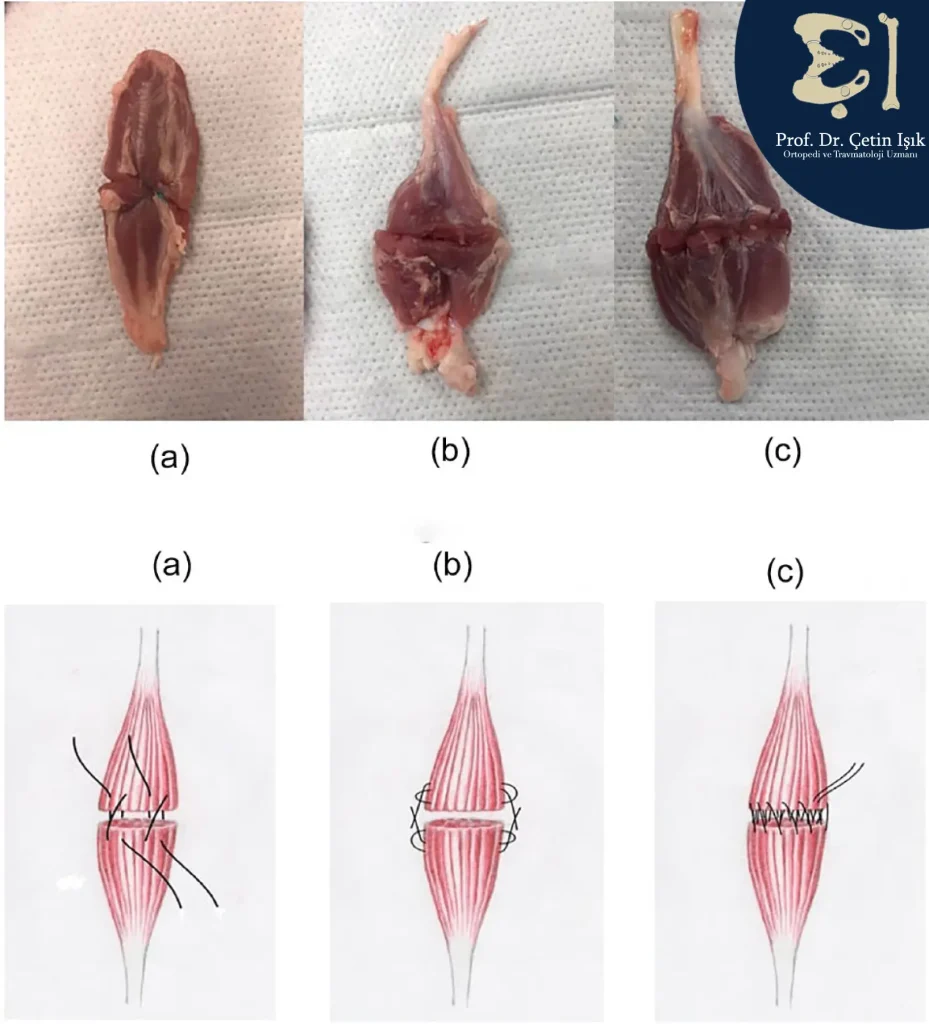
Muscle graft transplantation
Transplantation is performed in the case of extensive muscle tearing and loss of muscle tissue, where a muscle part is taken from the patient's own body (autograft) or from another person (allograft).
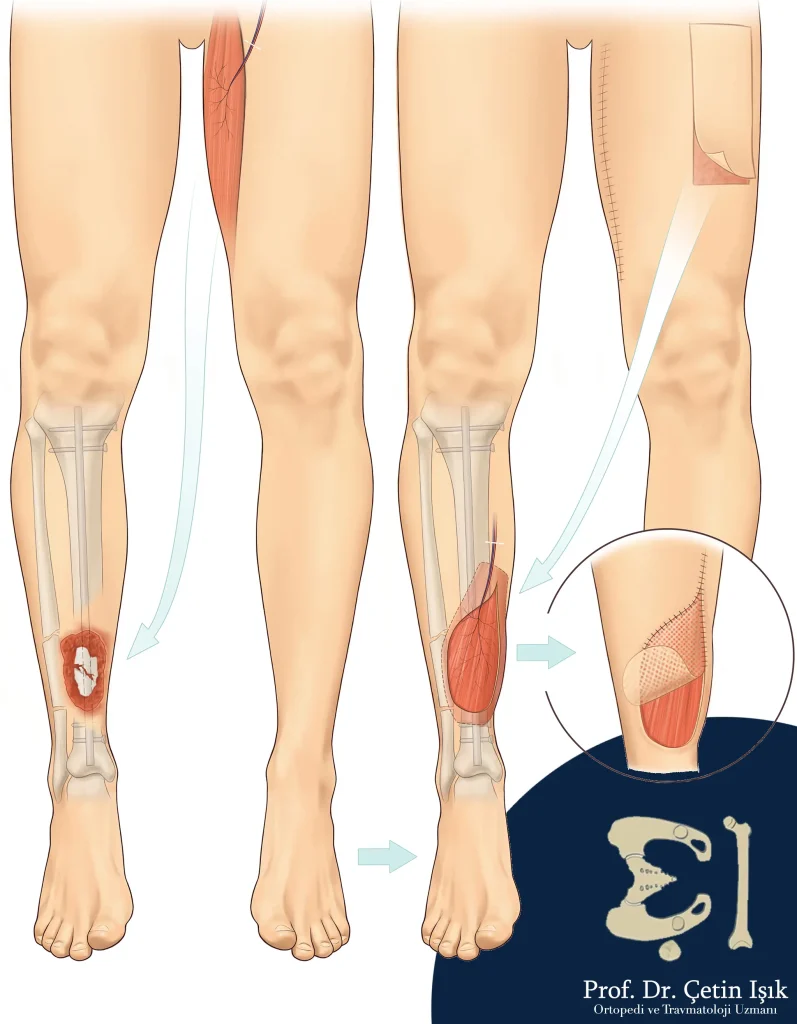
Tendon transfer
This surgical procedure is performed if the muscle tear involves a tendon, where a tendon is transferred from another part of the body to replace the torn tendon.
Complications of muscle tear
Complications of a muscle tear and the probability of their occurrence vary depending on the severity of the injury. Possible complications include the following:
- Chronic pain: Neglecting a muscle tear and not treating it properly can lead to the development of chronic pain, which causes discomfort to the patient and affects his activity.
- Scar formation: Scarring may form during the healing process, leading to Muscle stiffness It is defined in its function
- Recurrence of a tear: A tear can recur if the underlying cause of the tear is not treated because the torn muscles have become weaker, thus increasing the risk of a recurrence of the tear.
- Muscle imbalance: This imbalance occurs if the muscle does not fully recover, which leads to it being compensated by other muscles.
Preventing muscle tears
Muscle tear can be prevented by preventing its causes and following some preventive measures, including:
- Exercising regularly: Exercising helps strengthen muscles, reducing the risk of muscle tearing
- Warming up before engaging in any physical activity: A good warm-up increases blood flow to the muscles and thus prepares them to withstand stress
- Avoid fatigue: You must take breaks when performing any activity to avoid fatigue, which increases the risk of muscle tearing
Muscle tear is a common injury that involves tearing of muscle fibers, leading to pain, muscle weakness, and limited movement, affecting the patient's activities.
Sources:
Common questions
A muscle tear can be identified by the appearance of symptoms of a muscle tear, which are pain and swelling, determining the movement of the limb, and a popping sensation when it is torn.
Treatment for muscle tears varies depending on the degree of tear. Treatment includes rest, use of compresses, and some medications (pain relievers and muscle relaxants), in addition to physical therapy exercises. In severe cases, surgical treatment may be resorted to by reconnecting muscles, muscle grafts, and transferring tendons.
The healing time for a muscle tear varies depending on the degree of the tear and the patient's health, but it ranges from several weeks to several months.
Massage is good for a tear and speeds up healing because it increases blood flow and helps the muscles relax.
An ointment can be used to treat muscle tears by relieving pain and inflammation in mild cases of tear, such as non-steroidal anti-inflammatory ointments and topical analgesics.


